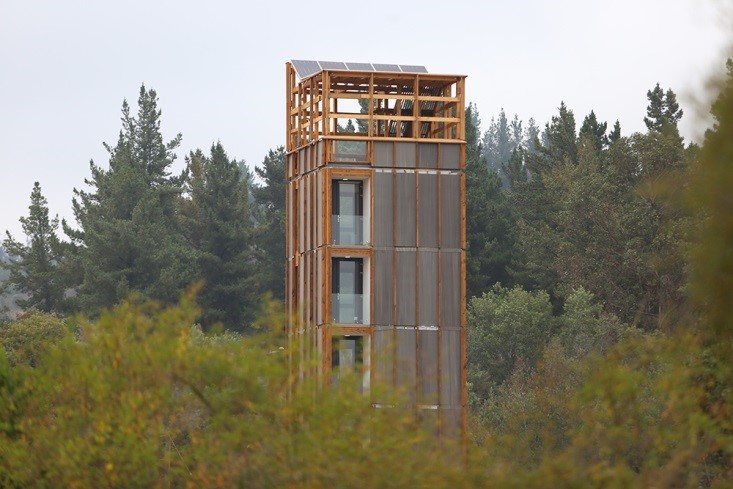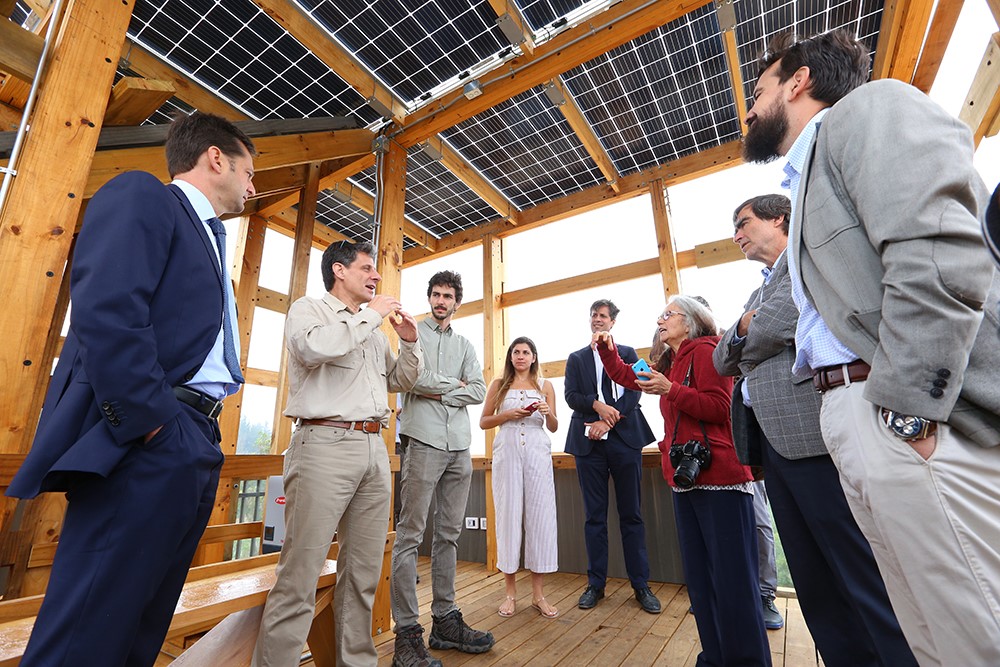Fraunhofer Chile installs new photovoltaic solar panel technology in the tallest wooden tower in Latin America
Fraunhofer Chile - Center for Solar Energy Technologies implemented a bifacial photovoltaic system at Torre Peñuelas lookout point.


The Fraunhofer Chile – Center for Solar Energy Technologies (Fraunhofer Chile CSET) began testing an innovative photovoltaic technology at the Peñuelas Experimental Tower, the tallest wooden building built in Latin America, with six floors in height.
The tower, located in the Lago Peñuelas National Reserve (Metropolitan Region), has made it possible to investigate the physical-environmental behavior of wooden housing constructions. This will generate practices that, in conjunction with the Ministry of Housing and Urban Development, can be applied in the construction of two wooden buildings to be used for social housing in Rancagua: a five-floor building and a six-floor building
Energetic Efficiency
One of the advantages of the buildings developed by the Center for Innovation in Wood of the Catholic University of Chile is that it increases energy efficiency. This is possible thanks to the fact that they incorporate the technology called "ventilated skin", which provides greater thermal comfort to the apartments and optimizes energy consumption.
The project considers the installation of photovoltaic solar systems on the top floor. Due to the open conditions of this floor, there is a unique opportunity to test new bifunctional photovoltaic technologies. These allow electricity to be generated with irradiation on both sides, allowing the production of energy per area used to be improved.
The top floor of the Peñuelas tower is an open space, which means a unique opportunity for CSET to install and investigate the behaviour of bifunctional modules in outdoor conditions. That is, the specific performance of their front and back faces depending on the perceived irradiation and their operating temperature.
Gonzalo Ramírez, Fraunhofer Chile CSET's specialist in electrical markets, explains that this technology, known as Building Integrated Photovoltaics BI-PV, "gives a feeling of more space by being transparent, which opens the door to be adopted as an active building material by architects.
 Fraunhofer Chile Research
Fraunhofer Chile Research